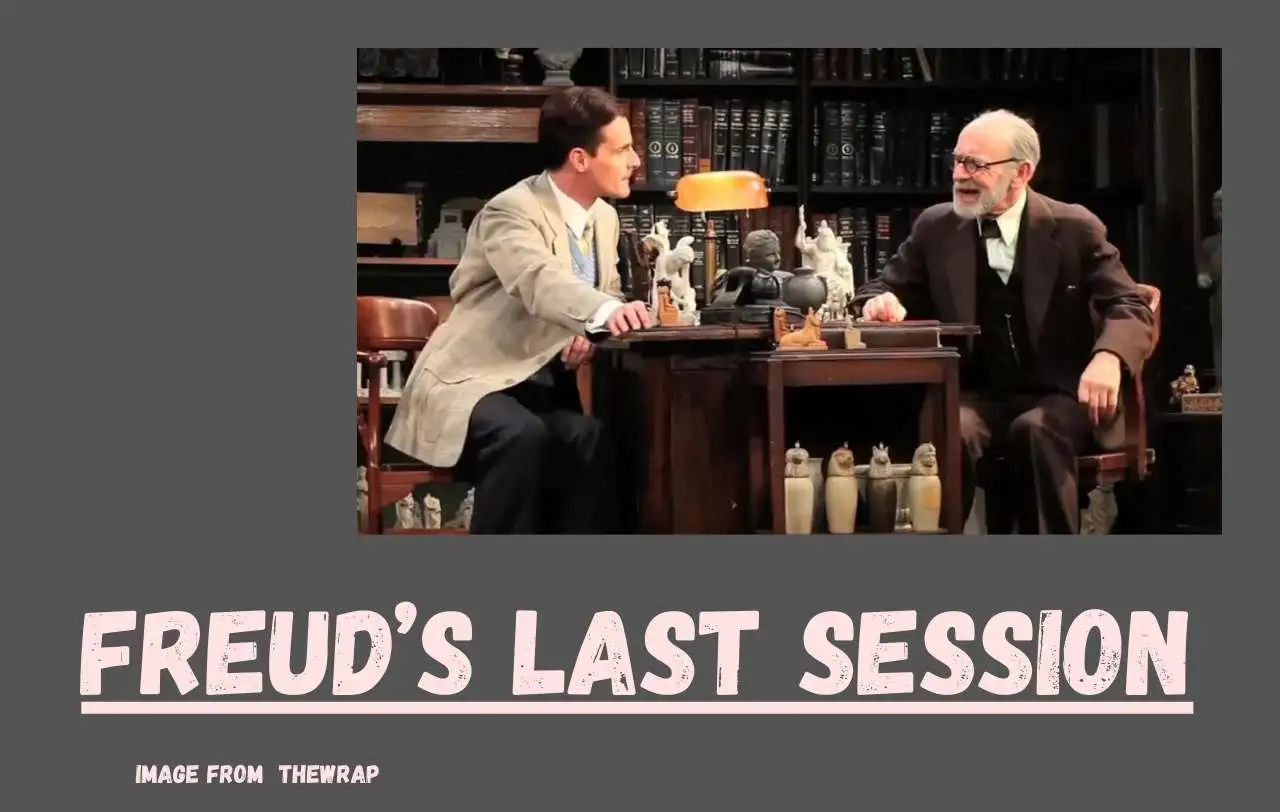In the cinematic masterpiece, “Freud’s Last Session,” directed by Matthew Brown and featuring stellar performances by Anthony Hopkins and Matthew Goode, audiences are transported to the historical juncture of September 1939. Against the tumultuous backdrop of Hitler’s invasion of Poland during World War II, the film encapsulates a riveting fictional encounter between renowned psychologist Sigmund Freud and literary giant C.S. Lewis.
The Historical Tapestry
Setting the Scene
As the movie opens, we find Lewis arriving fashionably late at Freud’s London home, setting the stage for a compelling dialogue that transcends the confines of time. The palpable tension of the era, marked by air raid sirens and wartime uncertainties, heightens the narrative stakes.
Pivotal Characters
Hopkins’ portrayal of Freud, battling oral cancer and grappling with atheism, contrasts with Goode’s depiction of Lewis, a man of faith navigating the complexities of war. Jofi, Freud’s chow chow, adds a charming touch, showcasing a peculiar fondness for punctuality.

The Script’s Intricacies
Navigating War Memories
In an attempt to liberate the narrative from its stage-bound origins, the filmmakers ingeniously use an air raid as a catalyst. This prompts Lewis and Freud to seek refuge in a church, delving into the recesses of Lewis’s World War I experiences through poignant flashbacks.
Father-Daughter Dynamics
The film skillfully explores Freud’s intricate relationship with his daughter, Anna, portrayed by Liv Lisa Fries. As a pioneer in child psychoanalysis, Anna becomes a central figure, and her complex ties with Dorothy Tiffany Burlingham inject a layer of emotional depth into the storyline.
Religious Debates and Symbolic Resolutions
Clash of Beliefs
Lewis and Freud engage in intellectual sparring, debating the authenticity of the Gospels and questioning divine intervention. These exchanges provide a thought-provoking lens into contrasting perspectives on faith and reason during a tumultuous historical period.
Symbolic Moments
A symbolic resolution unfolds as Lewis, played with nuance by Anthony Hopkins, assists Freud with a dental prosthesis. This moment not only serves as a metaphorical bridge between their differing ideologies but also adds a touch of humanity to their cerebral exchanges.
Read More Who is the Villain in Aquaman 2
Cinematic Aesthetics and Reception
Visual Style and Thematic Choices
The film’s visual style, characterized by a gray and shadowy aesthetic, raises intriguing questions. The decision not to film in black and white, which could have deepened thematic resonance, becomes a point of contemplation.
Ambiguous Reception
Despite the cinematic brilliance and profound exploration of faith and intellectual discourse, “Freud’s Last Session” appears to lack widespread commercial appeal. The reception remains ambiguous, leaving viewers grappling with the intended takeaway from the complex codependency portrayed on screen.
Anthony Hopkins’ Compelling Performance
Masterful Characterization
Hopkins, drawing from his prior role as an older Lewis, delivers a character imbued with depth and complexity. His portrayal adds a layer of gravitas to the film, overshadowing, to some extent, Goode’s rendering of the literary luminary.
Where can i watch jujutsu kaisen on Netflix
The Unexplored Potential of Black and White
Aesthetic Choices and Thematic Depth
One cannot help but wonder about the untapped potential of filming “Freud’s Last Session” in black and white. Such a choice could have heightened the film’s thematic depth, providing a visual metaphor for the stark contrasts in the characters’ beliefs.
Navigating the Ambiguities
Viewer Uncertainty
As the credits roll, viewers may find themselves grappling with uncertainties. The intellectual sparring between Freud and Lewis, while captivating, may leave some questioning the intended takeaway. The intricate father-daughter dynamic adds a layer of complexity that lingers in the minds of those who seek a definitive conclusion.
Final Thoughts: A Cinematic Tapestry of Faith and Friction
In conclusion, “Freud’s Last Session” stands as a cinematic tapestry woven with threads of faith, intellectual discourse, and the complexities of human relationships. While Anthony Hopkins’ compelling performance elevates the film, and the visual style prompts contemplation, its commercial appeal remains enigmatic. As viewers embark on this journey through history, they are invited to ponder the intricacies of belief and the enduring impact of intellectual clashes.
